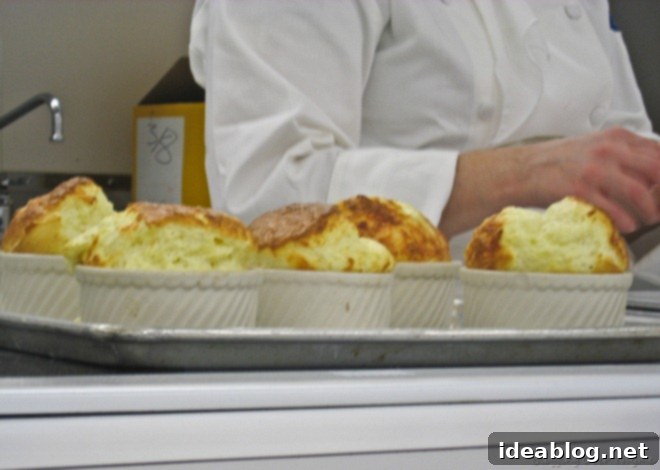Unveiling Culinary Secrets: Crafting French Baguettes, Focaccia, and Classic French Dishes
Embarking on a culinary journey often involves mastering foundational techniques and traditional recipes. Our recent class provided an immersive experience into the art of French bread making, alongside a diverse menu of classic French dishes. From the iconic crispness of a French baguette to the aromatic simplicity of focaccia, and elegant main courses, this day was a true testament to the joy and precision of professional cooking.
The Art of French Baguettes: A Step-by-Step Guide
Our day began bright and early with the meticulous process of crafting traditional French baguettes. These long, slender loaves, characterized by their crisp crust and airy interior, are a cornerstone of French cuisine. The journey starts with understanding the delicate balance required for perfect dough development.
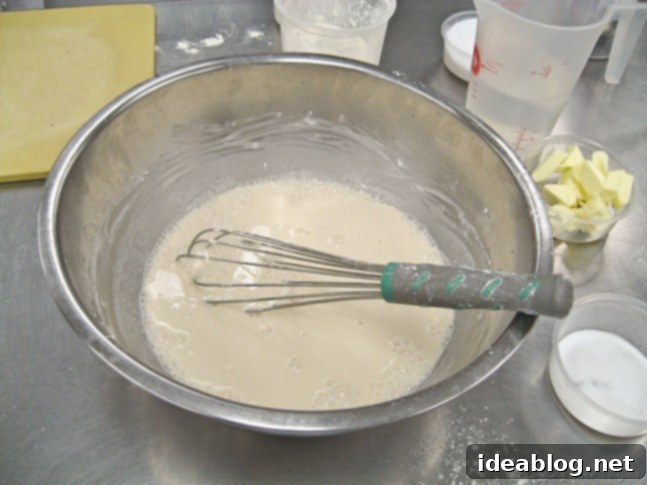
Mixing and Primary Proofing
The first critical step involved proofing active dry yeast in warm water, a process that awakens the yeast and ensures its vitality. Gradually, high-quality bread flour was incorporated, creating a shaggy, hydrated dough. This initial mixing phase is crucial for gluten development, which gives baguettes their characteristic chewiness and open crumb structure. We kneaded the dough until it just came together, forming a smooth, elastic mass. Once cohesive, the dough was flattened into a disc, carefully placed into a bowl, and tightly covered with plastic wrap. This allowed for the first rise, or bulk fermentation, during which the dough doubled in size, developing flavor and strength.
Shaping and Secondary Proofing
After the initial proof, the dough was gently turned out and portioned into precise 13-ounce pieces. This exact measurement ensures uniform baguettes, vital for consistent baking. Shaping baguettes is an art in itself; each piece was meticulously folded and rolled to create the iconic elongated shape, building surface tension and creating the tight structure needed for a good rise. These newly formed baguettes were then carefully transferred to specialized baguette mold pans. These pans provide crucial support during the secondary proofing stage, preventing the loaves from spreading too much and helping them maintain their distinct shape. This second rise allows the gluten to relax and the yeast to produce more gas, leading to a lighter, airier texture.
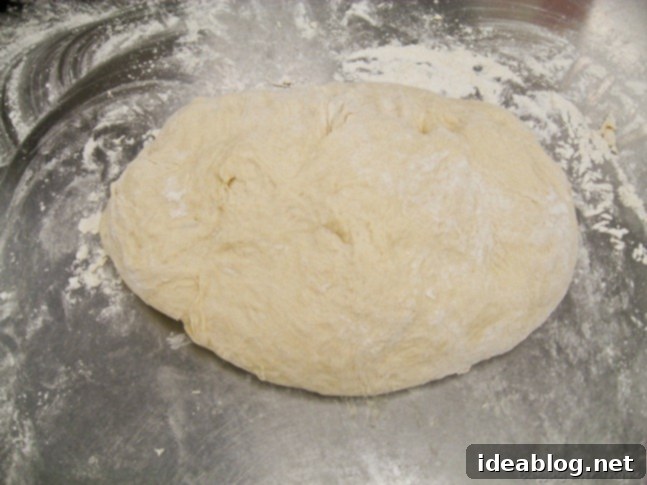
Baking to Perfection
With the secondary proof complete, the baguettes were ready for the oven. They were baked at a high temperature of 450 degrees Fahrenheit, which is essential for achieving a deep, golden-brown crust and a flavorful interior. A key technique for authentic baguettes is the introduction of steam into the oven during the initial baking phase. This steam delays the setting of the crust, allowing the dough to expand fully before the crust hardens, resulting in the desired crisp exterior and an impressive “oven spring.”
When they emerged from the oven, the transformation was remarkable. Golden-brown, deeply scored, and exuding an irresistible aroma, they truly looked beautiful. The satisfying crackle of the crust hinted at the delightful texture within.
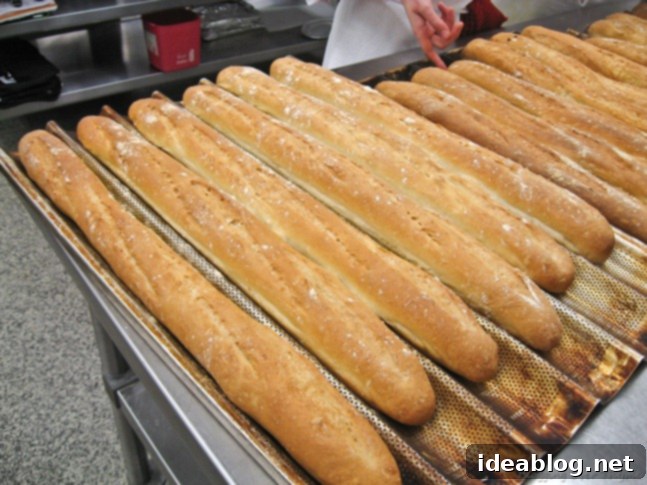
In total, we crafted four exquisite baguettes. The best part? We were delighted to take two of these artisanal loaves home with us at the end of the day. Their presence guaranteed a wonderfully authentic French dinner experience.
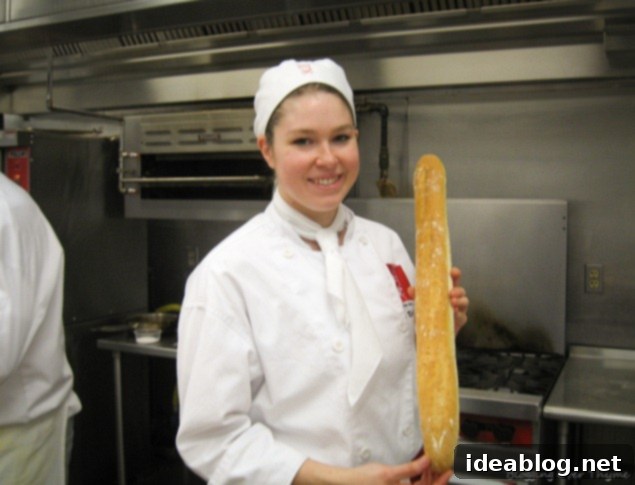
From left to right: Lyndsay, Blanca, Hannah, Chef Somchet, and Hadley – celebrating our bread-making success.
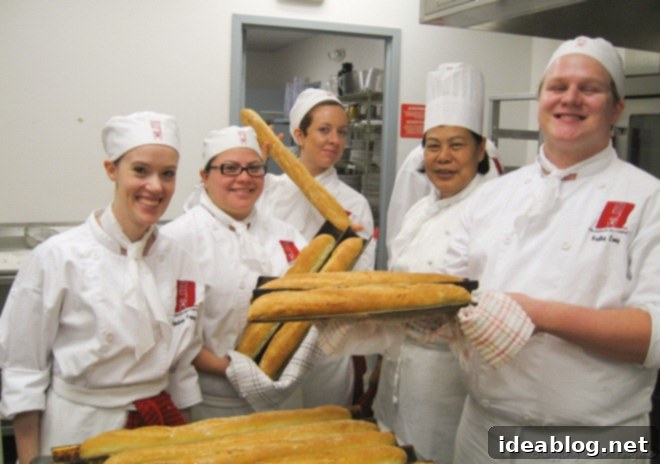
From Baguettes to Focaccia: Embracing Versatility
The beauty of working with a versatile dough lies in its potential for different creations. With leftover dough from our baguette production, we seized the opportunity to make focaccia – a delightful Italian flatbread renowned for its dimpled texture and flavorful toppings. This allowed us to experiment with creativity and personalization.
For my focaccia, I opted for a simple yet incredibly aromatic combination: fresh basil leaves, sun-dried tomatoes, and a generous sprinkling of parmesan cheese. The simplicity of these ingredients truly allows the rich olive oil and the dough’s subtle flavor to shine. The process involves pressing the dough into a shallow pan, dimpling it with fingertips, drizzling with olive oil, and then adding the desired toppings before baking. The result is a wonderfully soft, chewy interior with a slightly crisp crust, perfect for tearing and sharing.
Just like the baguettes, we were fortunate enough to take our freshly baked focaccia home. While the temptation of having such delicious, homemade bread readily available on the kitchen countertop is undeniable, it’s a testament to the satisfying rewards of our day’s labor.
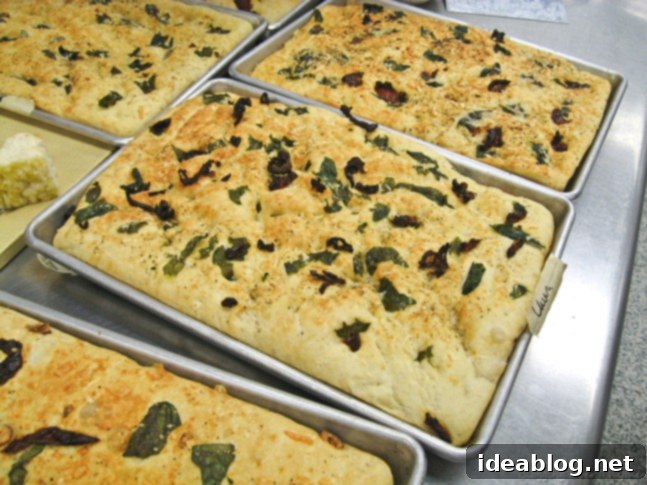
A Culinary Feast: Flank Steak, Bordelaise, and Classic French Sides
Beyond our bread-making endeavors, the day was also packed with preparing a complete French lunch menu. The main dish was a succulent flank steak, perfectly complemented by a rich and complex bordelaise sauce. This classic French sauce is traditionally made with bone marrow, red wine, and demi-glace. However, in our practical kitchen setting, we adapted the recipe, utilizing leftover lean meat scraps to achieve a robust flavor profile. Additional ingredients included finely diced shallots, a splash of red wine, aromatic mushroom stems, and a small amount of diced carrot, all simmered to create a deeply flavorful and velvety pan sauce. It truly elevated the flank steak, offering a luxurious culinary experience.
To accompany our perfectly cooked flank steak, we served two equally classic French sides: tournéed glazed carrots and pommes boulangère. The glazed carrots, meticulously “tournéed” (a French knife cut creating a barrel or olive shape), were cooked to tender perfection and coated in a subtle, glossy glaze. Pommes boulangère, a delightful potato dish, was a new and exciting addition to our repertoire.
Discovering Pommes Boulangère
Pommes boulangère is a comforting and flavorful potato preparation. It involves layering thinly sliced potatoes in a well-buttered sautoir pan, typically with caramelized onions, and then adding a small amount of chicken stock. The dish is then slow-baked in the oven for approximately an hour, allowing the flavors to meld and the potatoes to become incredibly tender. The essence of this dish is often described as a sophisticated blend of French onion soup married with the hearty goodness of potatoes. Its rich, savory flavors made it an instant favorite.
Unfortunately, in the hustle and bustle of lunch preparation and service, I completely forgot to capture photographs of our exquisite main dishes. While the images are missing, the memory of their exceptional taste remains vivid.
The Delicate Art of Cheese Soufflé
Our appetizer for the day was a spectacular savory cheese soufflé. Unlike the sweeter soufflés we had prepared in previous weeks, this version was a testament to savory elegance. The foundation of this soufflé was a meticulously prepared Mornay sauce, a rich béchamel sauce infused with Gruyère and Parmesan cheese. This creamy base was then thickened with egg yolks, providing structure and flavor. The magic truly happened right before baking when perfectly whipped egg whites were delicately folded into the cheese mixture. The aeration from the egg whites is what gives the soufflé its characteristic light, airy texture and impressive rise. Baked until golden brown and puffed high, it was a truly satisfying and impressive dish.
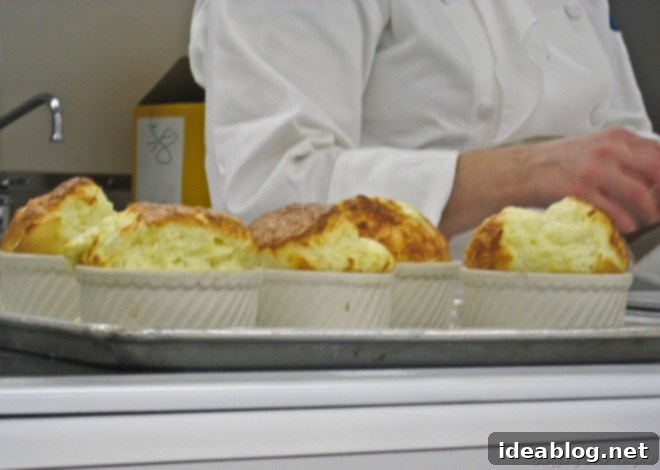
Indeed, it was a delight to both prepare and taste!
Sweet Endings: Crafting Kipferlins Cookies
Given the significant amount of bread baking we undertook, our dessert was a simple yet elegant cookie: Kipferlins. Also known as Kipfers, these charming moon-shaped cookies hail from Austrian and German culinary traditions, often associated with holiday baking. They are remarkably easy to make, combining softened butter, all-purpose flour, almond flour for a delicate nutty flavor, and a small amount of powdered sugar. The dough is rolled into small balls, which are then skillfully shaped into perfect crescents.
After a brief chilling period of 20-30 minutes, which helps the cookies hold their shape, they are baked for a mere 8-10 minutes until lightly golden. The quick baking time ensures they remain tender and delicate. These buttery, light cookies boasted a wonderful melt-in-your-mouth texture. Once cooled, they were generously rolled in a mixture of powdered sugar and cinnamon, adding another layer of aromatic sweetness. These little crescents were incredibly hard to resist and provided a delightful conclusion to our culinary exploration.
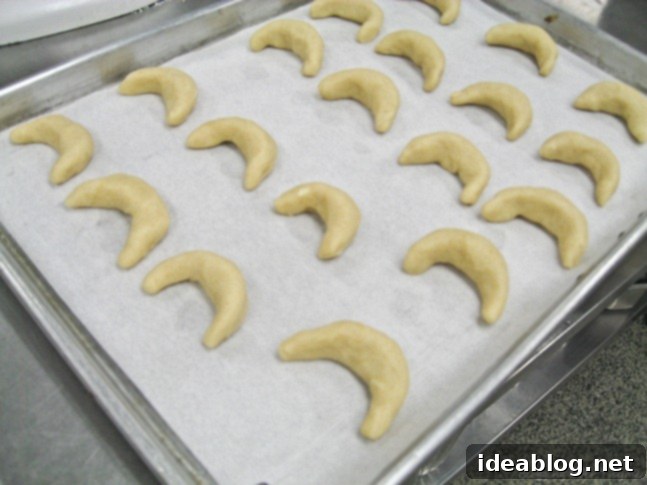
Behind the Scenes: Preparations for Future Culinary Adventures
The afternoon session was dedicated to a less glamorous but equally crucial aspect of professional cooking: chicken bone trimming for stock production. As we prepare to transition into Phase II of our culinary program, the focus shifts away from basic stock-making. This means that during Phase I, we must produce a substantial quantity of foundational stocks to support the advanced recipes and preparations of the upcoming phase. Since the next Phase I class won’t begin for another two weeks, it’s essential to stock up now, ensuring a continuous supply for all our future culinary endeavors. This labor-intensive but vital task underscores the importance of mise en place and forward planning in a professional kitchen.
With a busy day behind us, my focus now shifts to intensive study for Practical #3, our next major culinary examination, scheduled for this coming Thursday. Each day in the kitchen is a valuable lesson, building skills and confidence for the challenges ahead.
